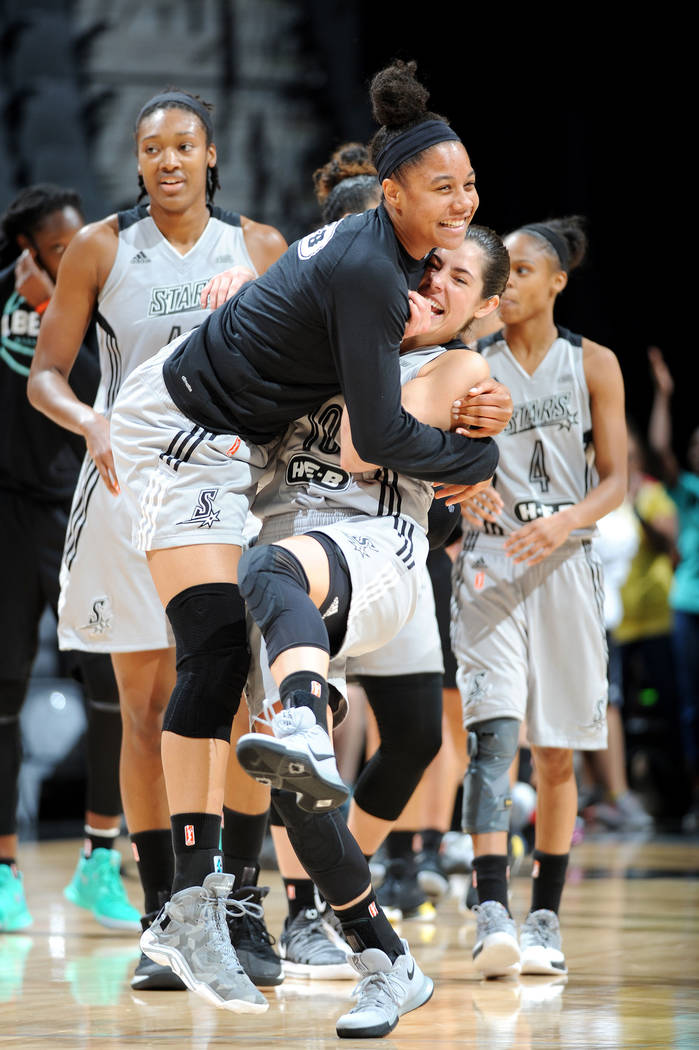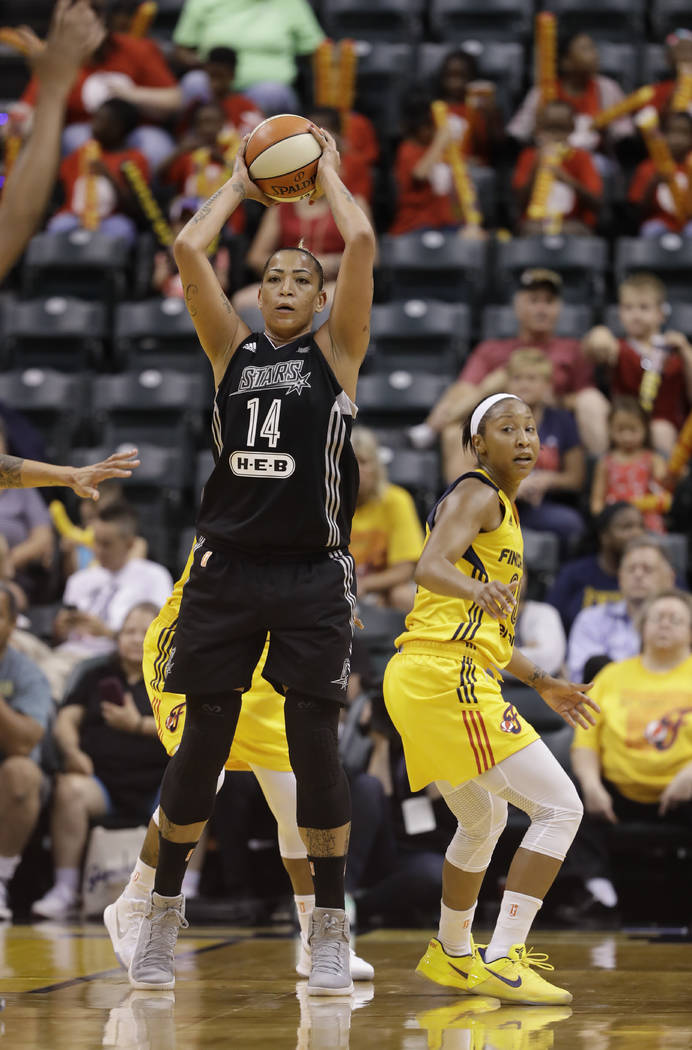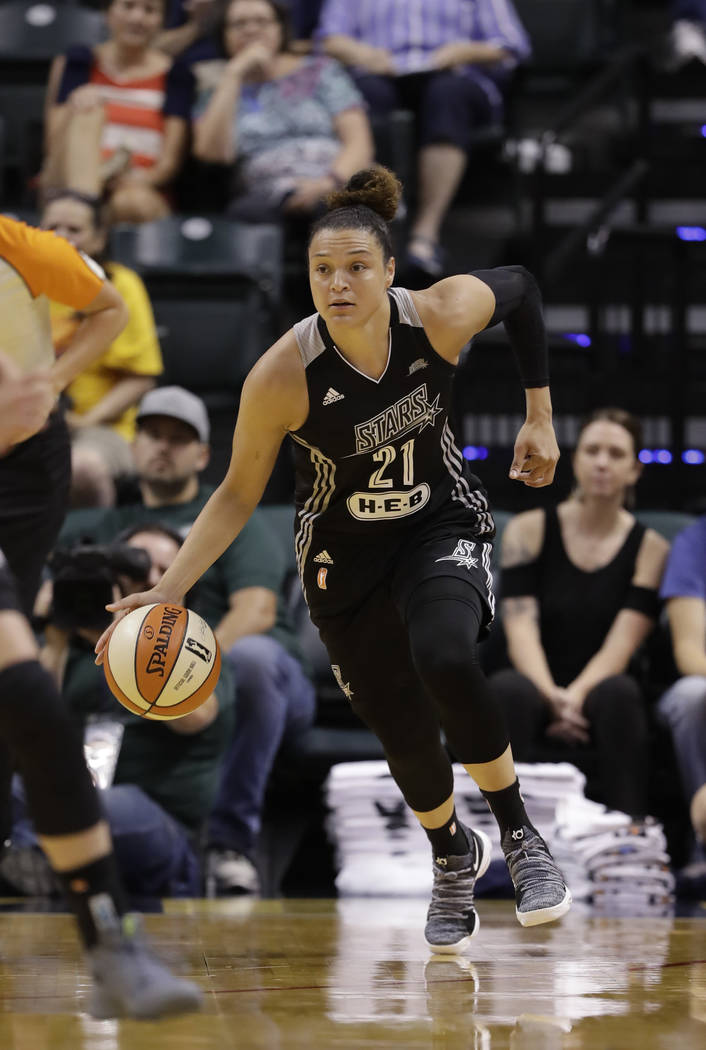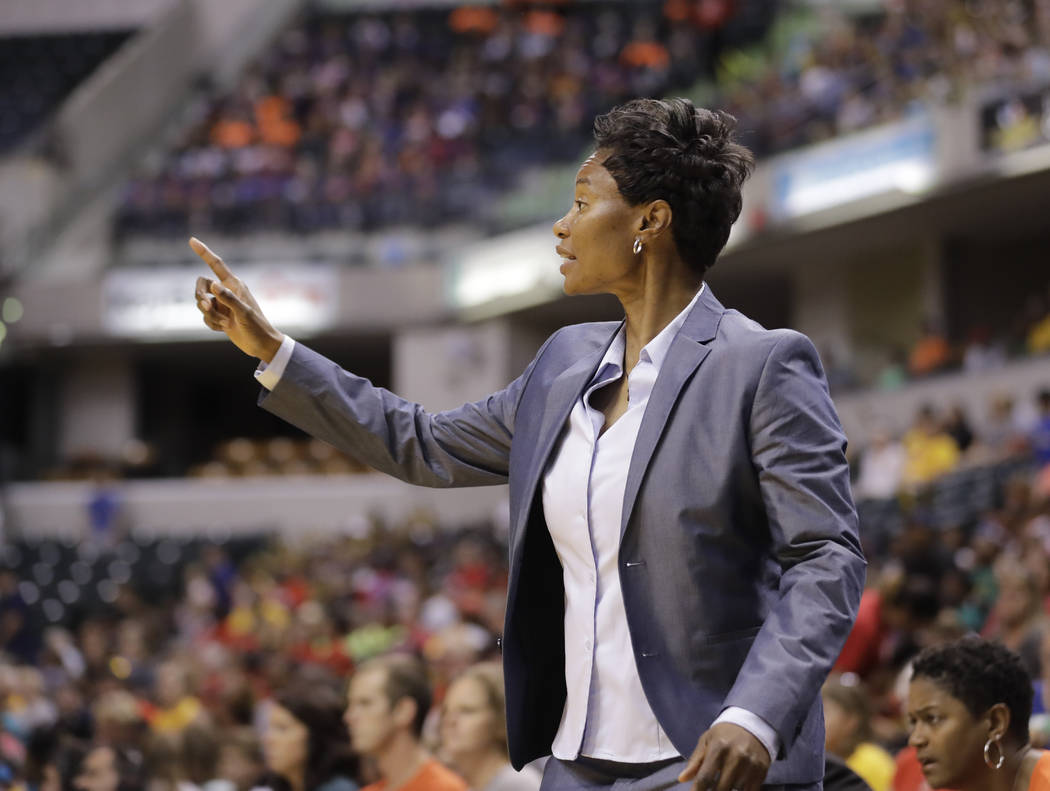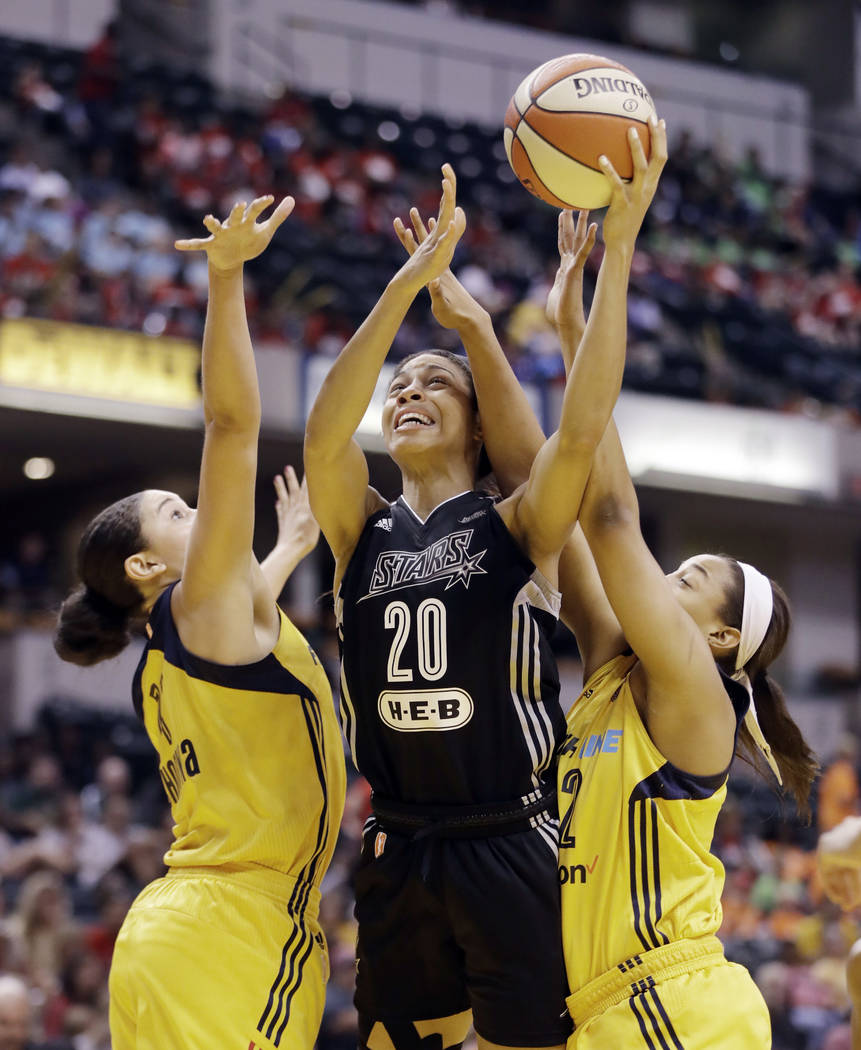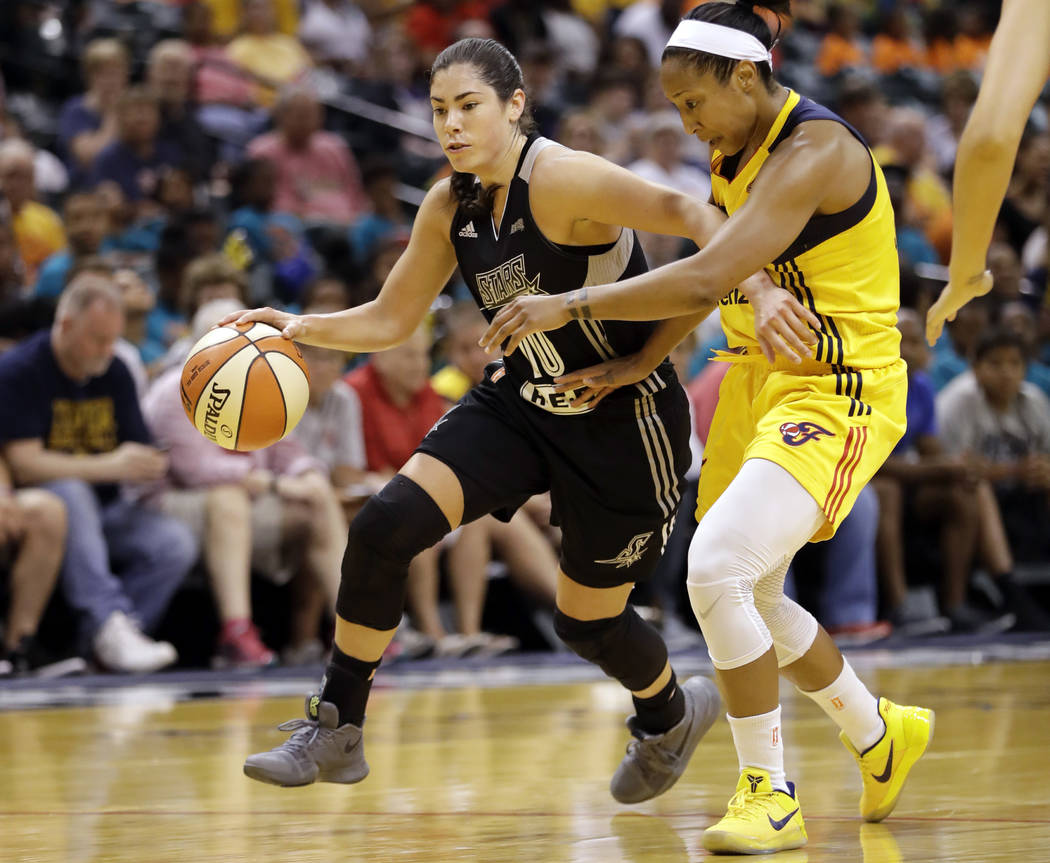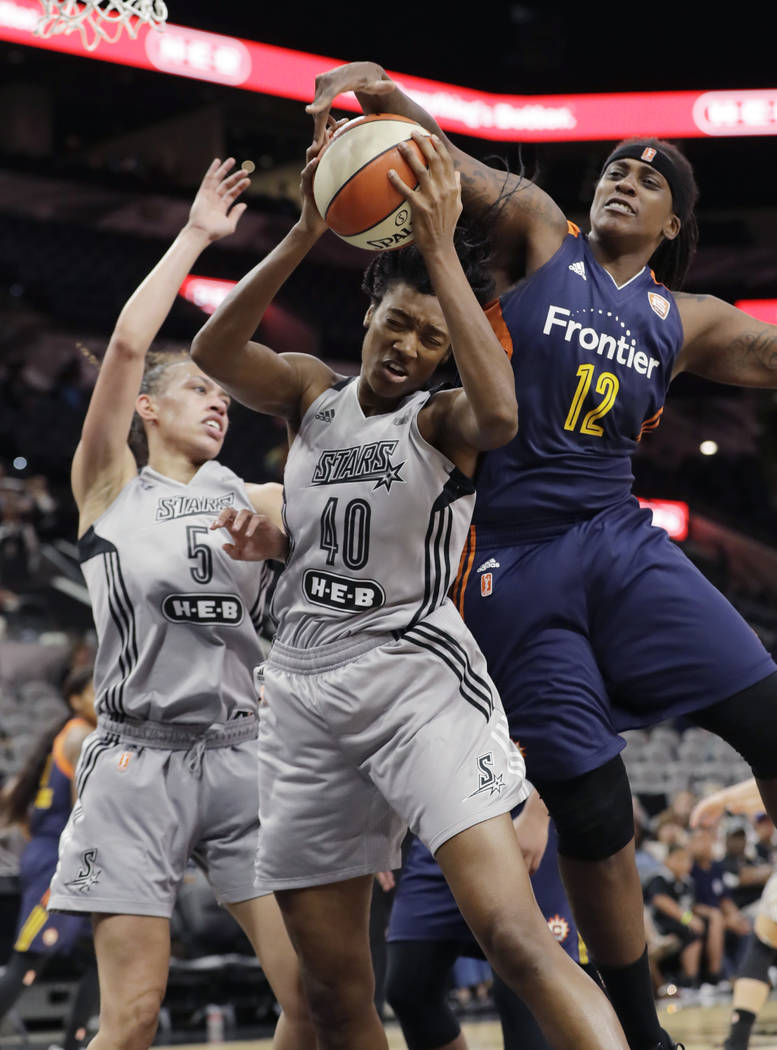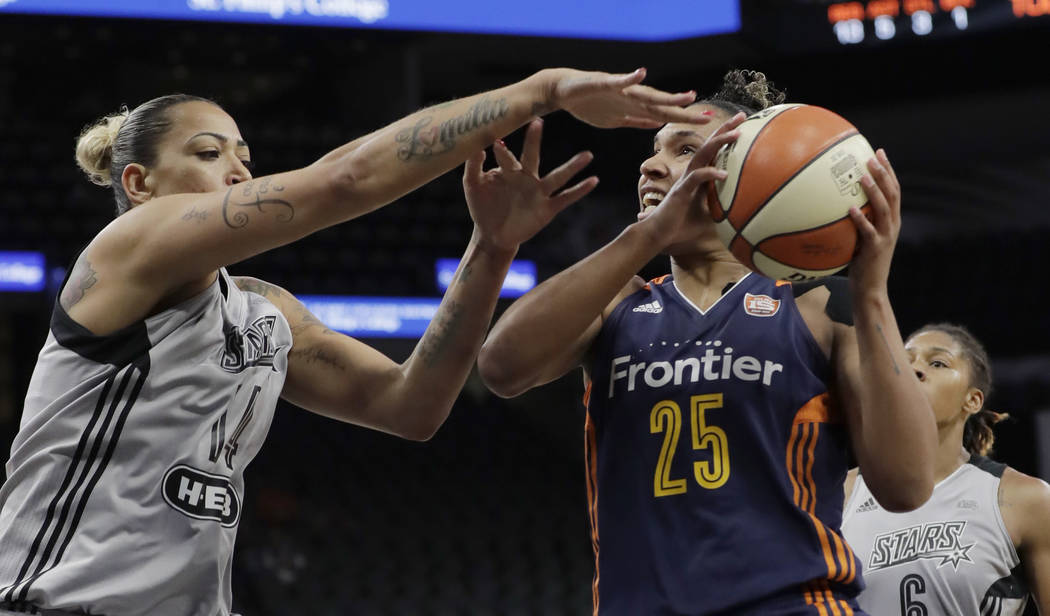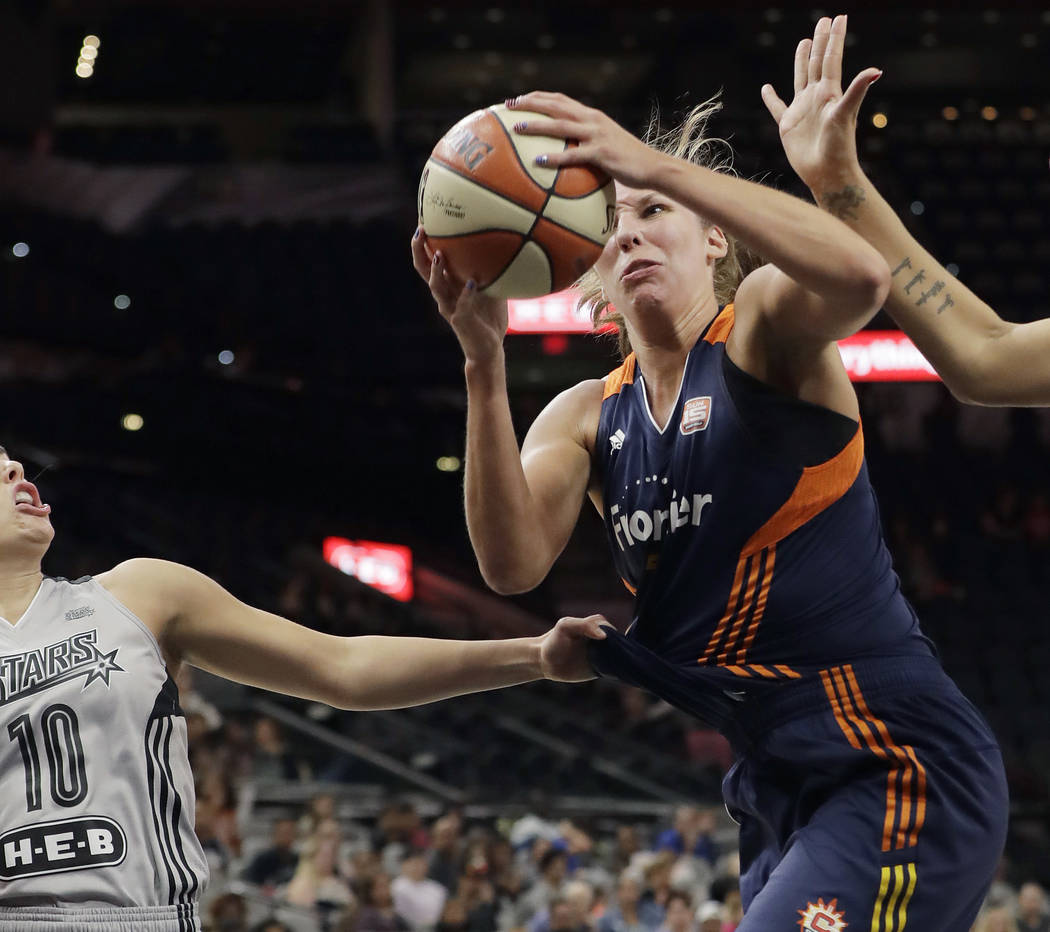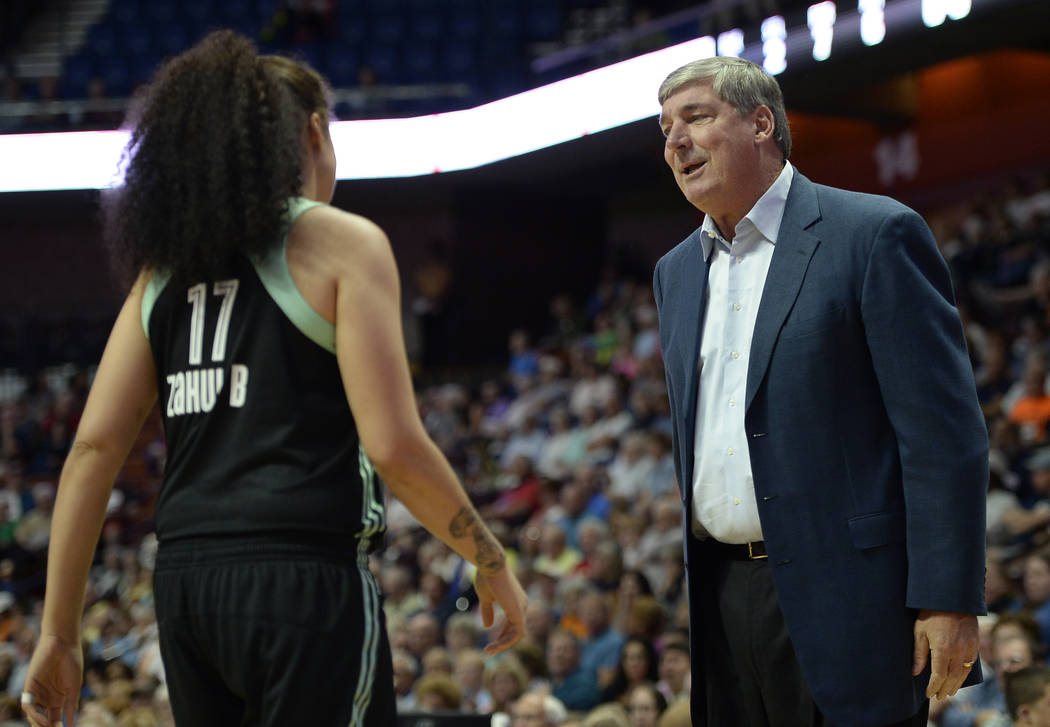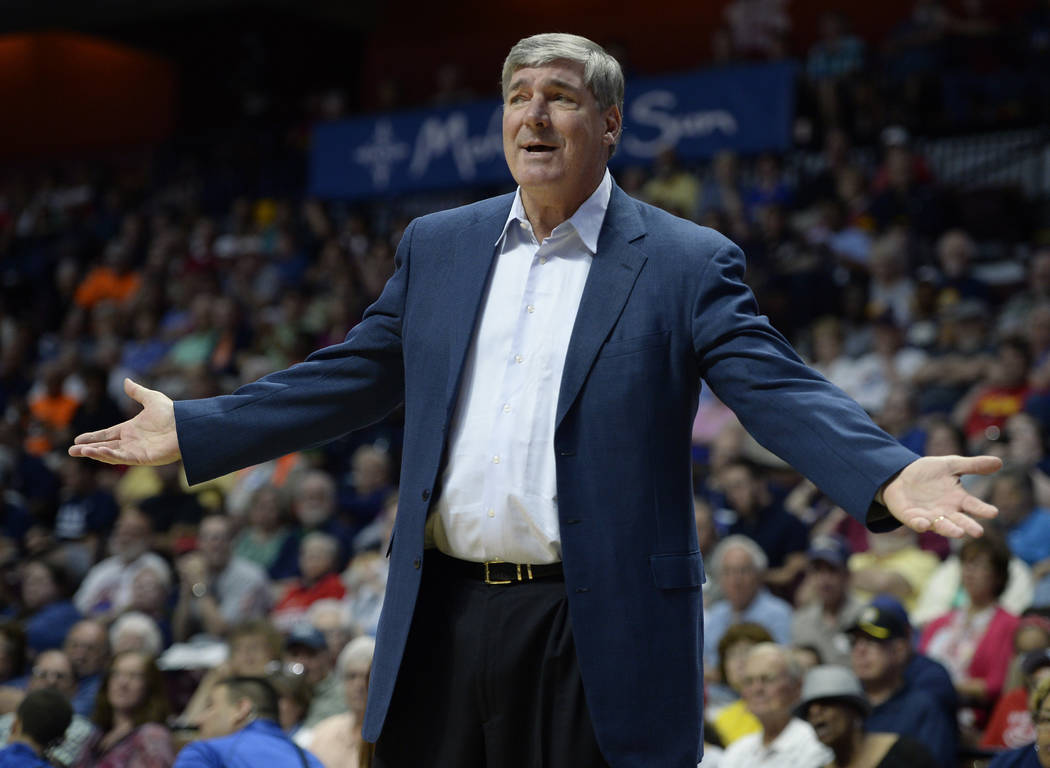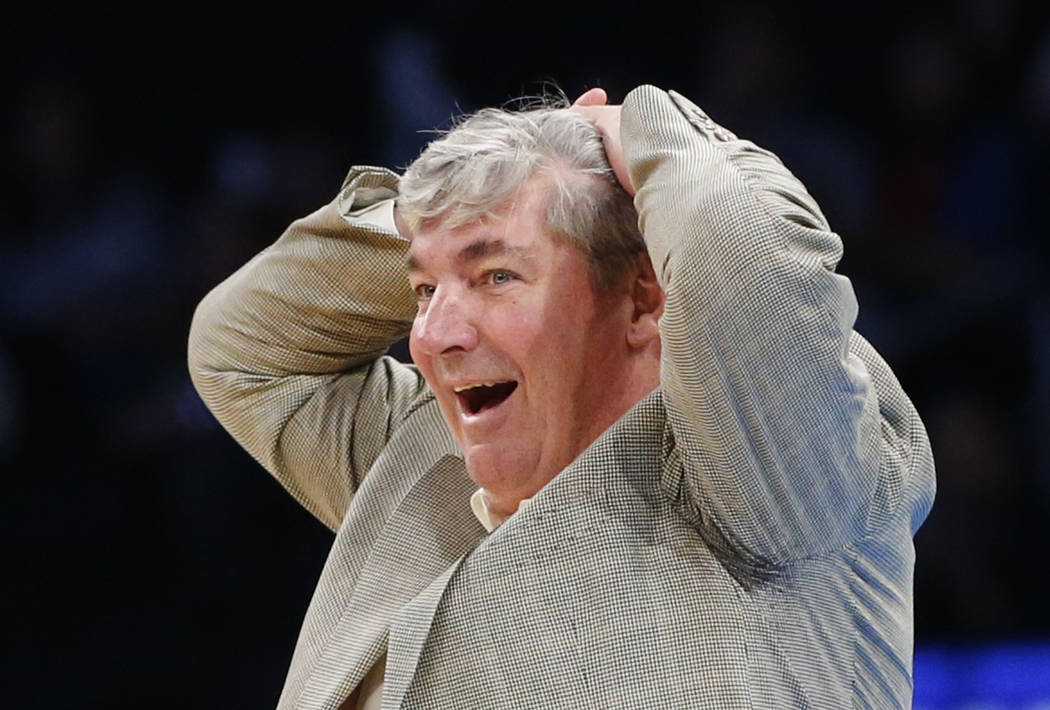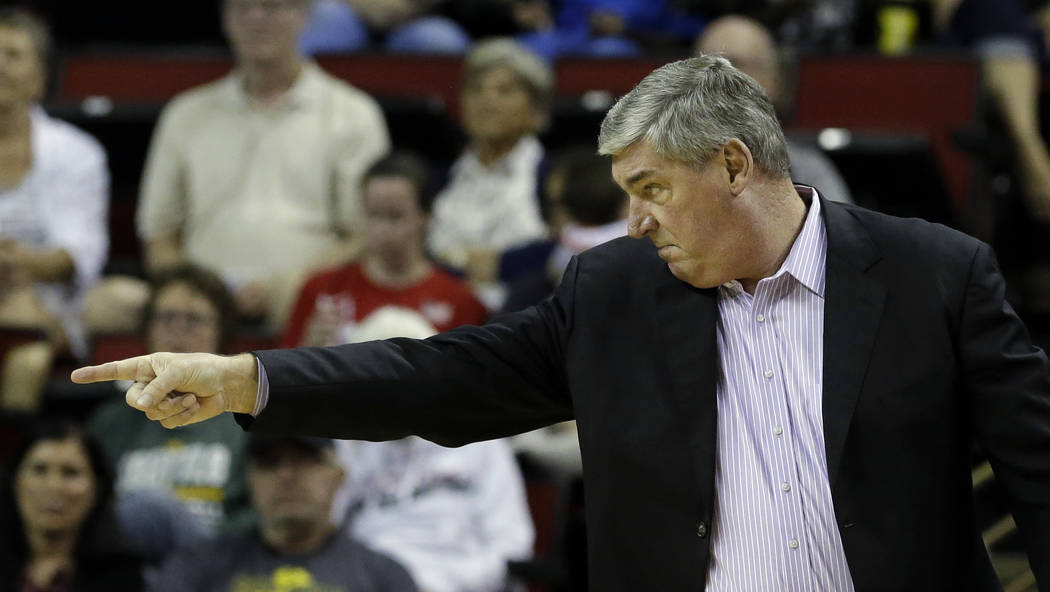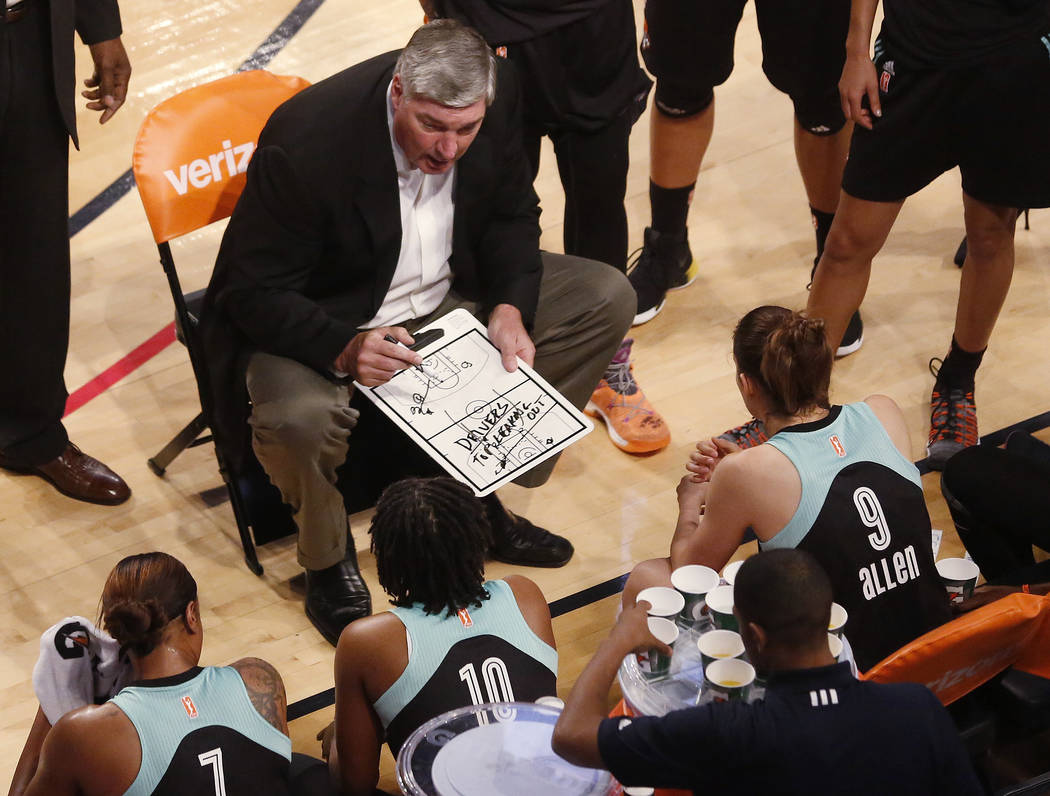WNBA’s potential success in Las Vegas rests on MGM
While the NBA has been largely credited with helping sustain the WNBA’s run as the longest-operating women’s professional team sports league in America for more than 21 years, there might be three more important letters to the chances of success in Las Vegas.
MGM.
Casino giant MGM Resorts International purchased the San Antonio Stars and confirmed the franchise’s relocation to Las Vegas and the Mandalay Bay Events Center this past week. While it’s unclear whether the team still will be called the Stars, there is little doubt big changes will need to be made if the franchise wants to make Las Vegas a viable market for the WNBA.
One major move already has been announced.
Former NBA star and longtime WNBA coach Bill Laimbeer has been hired as coach and president of basketball operations.
What should Las Vegas' @WNBA team be called? Reporter @AdamHillLVRJ came up w/ a few suggestions
READ MORE → https://t.co/hvhD16jfSX— Las Vegas RJ Sports (@RJ_Sports) October 22, 2017
Infrastructure in place
Laimbeer, who has won three titles as a coach, has been around the league long enough to know what it takes to succeed and thinks the Las Vegas franchise has a major advantage over others trying to build a winning operation.
“The MGM understands what they got into,” he said. “They’re prepared. They have teams of people organizing things and the league is involved, and the league is very good at telling a franchise what is necessary across the board. That process has begun. They have the ticketing infrastructure, they have the sponsorship infrastructure, the PR staff. A large part of the business is already taken care of on that side. Now it’s just about making it work on the basketball side.
“That’s my job.”
That might be quite a challenge. The team has finished with the worst record in the 12-team league in each of the past three seasons, and Las Vegas fans love a winner.
Former UNLV star Sequoia Holmes knows that. She played with San Antonio last season and hopes to be a part of the team’s transition to Las Vegas.
Holmes pointed out the improvements made by the team’s young nucleus and a strong finish to the season. While her contract situation isn’t clear, she thinks the team can be successful and wants to be a part of it.
“I’m excited to have the chance to play in my hometown,” the 31-year-old said from Israel, where she is playing for Bnei Yehuda. “It has kind of become the home of basketball in the summer, and I think one of the things the WNBA does really well is get involved in the community through the WNBA Cares program. The team will feel like part of the city, and that will help.”
Challenges ahead
Holmes, a Mojave High School graduate, has spent parts of three seasons in the WNBA since finishing her UNLV career in 2008, but like many female American basketball players, she has made most of her money playing overseas.
The maximum salary in the WNBA is just over $100,000 per season, and despite keeping payrolls low, most franchises have struggled to make a profit.
A TV deal with ABC and ESPN pays the league about $12 million per year, which works out to $1 million per team but pales in comparison with the $2.6 billion per season in rights deals generated by the NBA.
Attendance and ratings have seen modest gains over the past two seasons to a six-year high of 7,716 per game in 2017, which is largely credited to better marketing and branding under new president Lisa Borders, as well as an influx of college stars who have been more successful carrying their fans over to the next level.
The most recent postseason provided reason for more optimism.
WNBA playoff games averaged 9,596 per game in 2017, and the decisive Game 5 of the finals between Los Angeles and Minnesota drew 902,000 viewers, making it the fifth-most watched WNBA game on record. The league also has been proactive on social media, streaming 20 games during the season on Twitter and reaching a new generation of fans across all platforms.
Specific financial numbers for the league’s franchises are difficult to come by, though some indications have not been positive.
According to a 2016 New York Times report, half of the teams in the league lose money.
New York Liberty owner James Dolan said in an HBO interview he had thought about giving the team back to the WNBA. Chicago Sky owner Michael Alter, an outspoken advocate of the league, told the Chicago Tribune in July he hopes to finally start breaking even in the next year or two with the team he bought in 2005.
Independent teams face an even tougher challenge, as they don’t have the support, staffing and infrastructure of the parent club to rely on for much of the day-to-day operations. When the league started, all of the franchises were closely affiliated with NBA teams.
The MGM’s purchase of the Stars from the group that owns the San Antonio Spurs means more than half the teams are independently owned, a sign franchises might be starting to turn a corner toward economic viability.
An MGM Resorts spokesperson declined to comment on how much the company paid for the team, a common practice in the league. Estimates on the value of WNBA franchises over the past few years have been $2 million to $10 million.
Crowded market
It wouldn’t appear to help matters that the team is entering a sports landscape growing more crowded by the month.
The NHL’s Golden Knights began play this season, and the NFL will enter the market in 2020 with the relocation of the Raiders from Oakland. The WNBA season runs from May to September, and summers long have been the domain of the Triple-A 51s, who will be joined at Cashman Field in 2018 by the Las Vegas Lights FC of the United Soccer League.
That doesn’t include NASCAR, UFC, boxing, UNLV sports, and special events and entertainment options. Las Vegas has become a basketball hotbed in the summers with AAU tournaments, the NBA Summer League and Team USA training camps, which could provide the WNBA team with momentum in the middle of its season.
Brett Lashbrook, founder and owner of Las Vegas Lights FC, welcomes the WNBA with open arms even if the league will be competitors in the sports landscape.
“I’m really a believer in a rising tide lifts all boats,” he said. “I think it’s a great time for sports in this city.”
51s president Don Logan, whose team is expected to move into a new ballpark in Summerlin in 2019, said he thinks the WNBA franchise is in good hands.
“Listen, there is a lot of competition for the entertainment dollar,” Logan said. “It’s a tough business, but the MGM name carries a lot of weight in this town.”
Means to an end?
MGM CEO Jim Murren told the Review-Journal in October 2016 that he was pursuing an NBA team he could move to Las Vegas to join the Golden Knights as anchor tenants at T-Mobile Arena.
It’s possible the long-term financial success of the WNBA franchise is secondary to the company to building a relationship with the NBA as it works toward acquiring an NBA team.
An MGM Resorts executive didn’t dismiss that theory this past week.
“We certainly value and cherish our longstanding relationship with the NBA,” Lilian Tomovich, Chief Experience &Marketing Officer for MGM Resorts, told the Review-Journal. “We look forward to other opportunities down the road, but there’s nothing at the moment to discuss.”
For now, the focus will be on building the WNBA brand on the Strip.
That could include hosting the draft, All-Star Game and other major events on the league’s calendar. Borders called the MGM’s entrance a “match made in heaven.”
Las Vegas might not be the league’s marquee franchise on the court or the box office anytime soon, but the city is almost certain to become its favorite destination.
Contact Adam Hill at ahill@reviewjournal.com or 702-277-8028. Follow @adamhilllvrj on Twitter.
Related
MGM Resorts revealed as buyer of WNBA franchise for Las Vegas
Bill Laimbeer bringing chips to the WNBA table in Las Vegas





